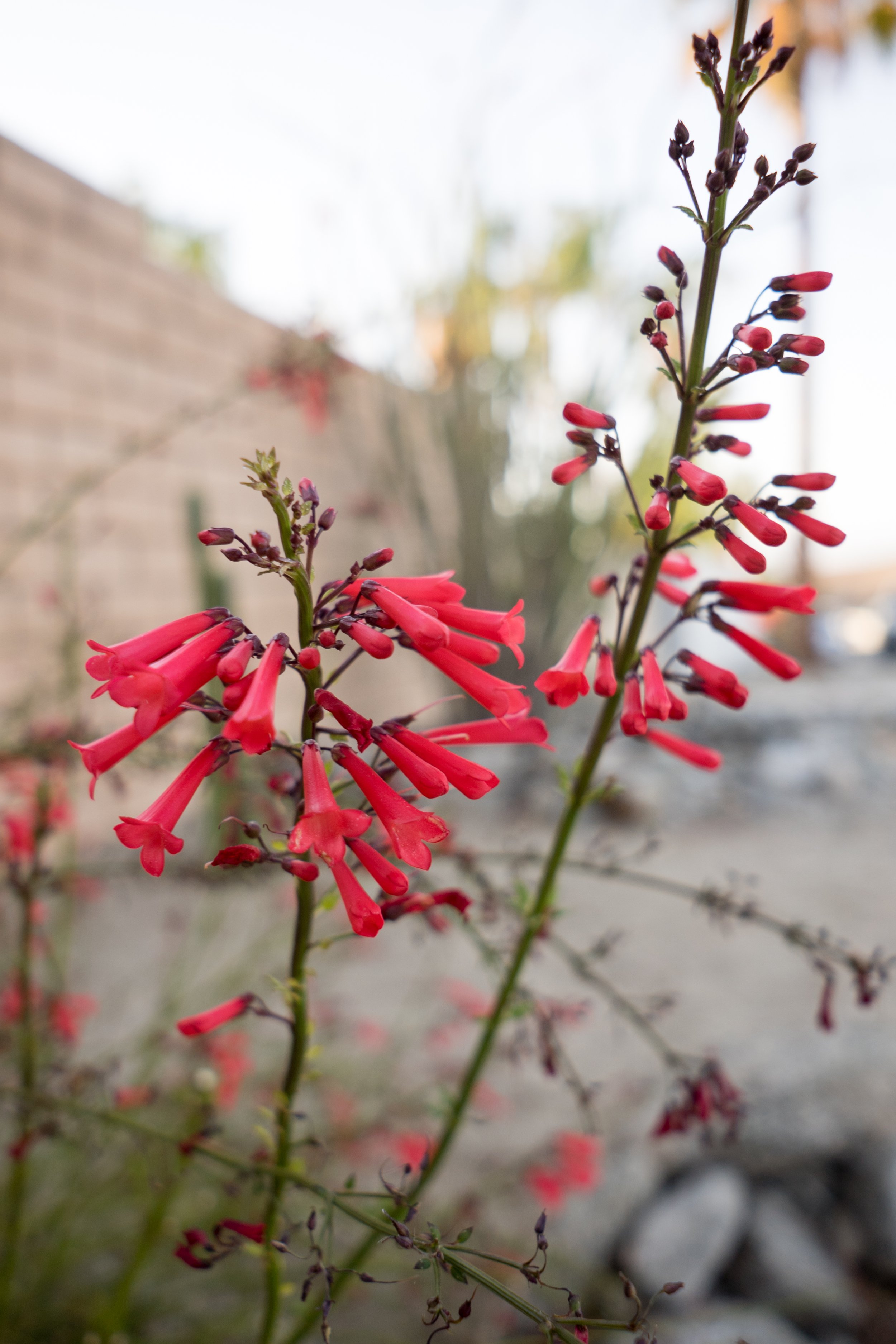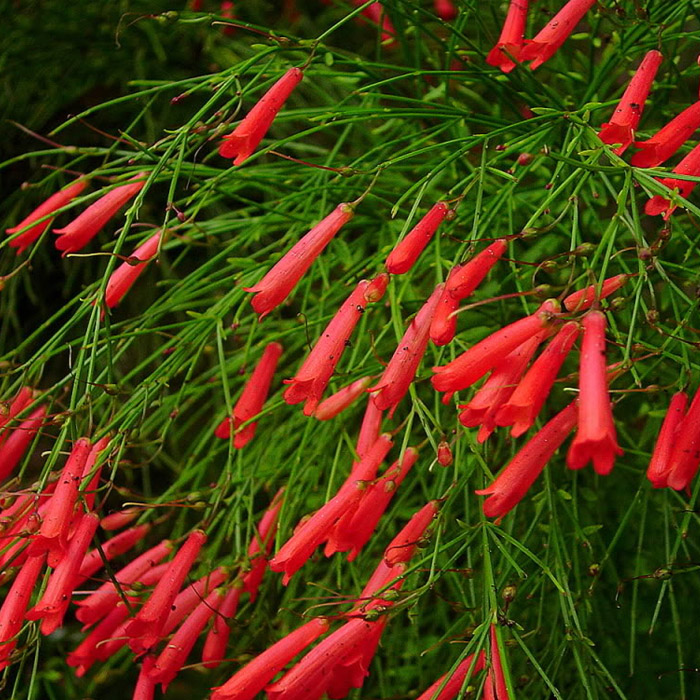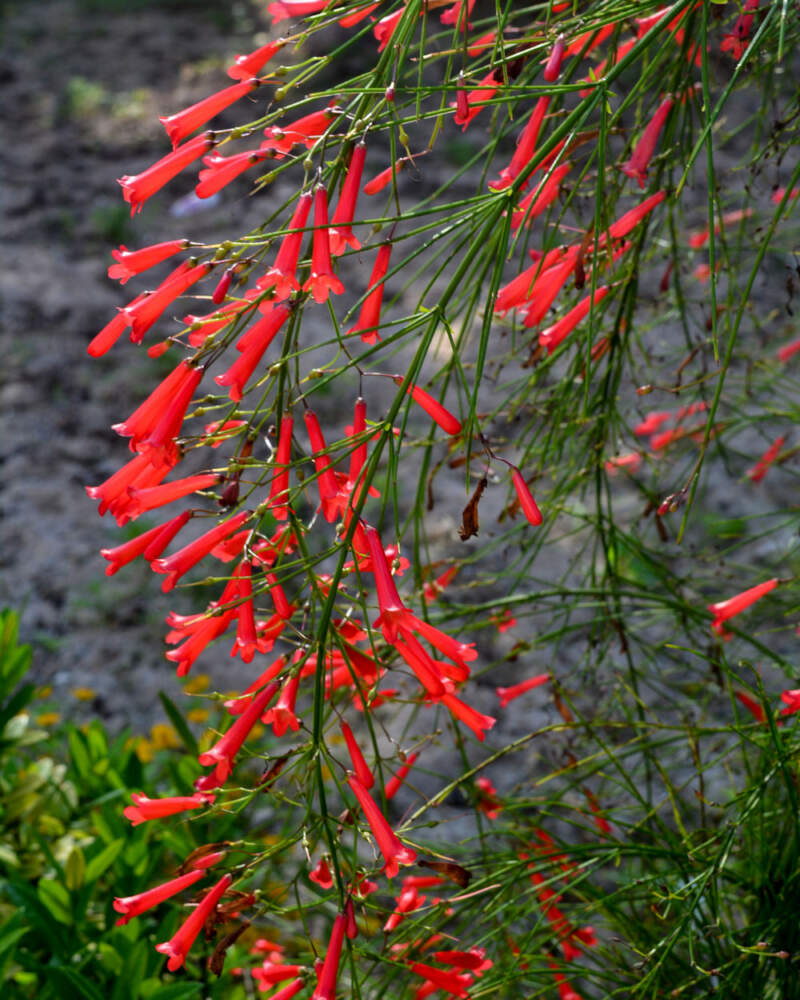Firecracker Plant Care: Easy Tips for Healthy Growth and Blooms

Step into my early summer garden at 7 a.m. The air is still cool, the world mostly silent except for a staccato flurry of wings—a ruby-throated hummingbird hovers in front of my firecracker plant. This has become a ritual I look forward to more than that first cup of coffee, and it’s also the reason Russelia equisetiformis quietly secured a permanent place in my landscape strategy.

But here’s what most guides don’t mention: beyond its obvious beauty and resilience, the firecracker plant succeeds as the emotional lever gardeners crave—it delivers visible results (blooms and wildlife) for modest effort, which makes us feel competent, even adventurous. That psychological “reward” loop isn’t an accident; there’s actual behavioral science at play.
Why Do We Gravitate Toward Firecracker Plant—Psychologically Speaking?
Humans are wired to respond to feedback. Encounter too many setbacks (think fussy roses plagued by blackspot), and our motivation flags. On the other hand, when we experiment with Russelia—a plant that forgives overwatering one week and underwatering the next—and it rebounds with more flowers or another hummingbird visit, we’re hooked. It’s intermittent reinforcement in action: a little uncertainty keeps things interesting, but regular wins keep us coming back.
I’ve tracked this pattern across dozens of gardening clients over five years: after trying firecracker plant alongside other “drought-tolerant” species like lavender or gaura, about 80% reported sticking with Russelia long-term because they saw direct payback for minimal investment. Watching wildlife show up daily feeds both curiosity and pride—and that satisfaction becomes addictive.

What My First Firecracker Plant Taught Me (And Nearly Cost Me)
The first time I planted Russelia, I actually got it wrong: tucked it into heavy clay soil behind my shed where water pooled after rainstorms. By late summer 2016, it was clearly struggling—leaves yellowed, stems limp. Most people would’ve written it off as another failed experiment.
Here’s where things turned: instead of giving up, I cut every stem back to six inches above ground mid-September and ignored it except for adding sharp sand around the root zone. By April? New growth exploded outwards—denser than before—with twice as many flower sprays by July. The lesson embedded itself: this isn’t just a tough shrub; it’s psychologically liberating to know you can recover from missteps without shame or wasted money.
Applying Behavioral Insights to Plant Care

Let’s dig deeper into why these care guidelines “work” on both plant and person:
- Sunlight & Bloom Production:
Gardeners reliably report greater satisfaction when their inputs result in distinct outputs—here, full sun begets vivid blooms within weeks. Instead of vague hope (“maybe it’ll flower this year...”), you’re rewarded promptly when you follow through. - Watering Habits:
Leaving the soil dry for a few days aligns perfectly with most homeowners’ tendency toward neglect—or summer vacations when irrigation falters. When Russelia thrives anyway? You experience positive reinforcement (the gardener’s equivalent of an easy A). - Pruning Response:
Studies on habit formation show that immediate gratification cements behaviors; post-bloom pruning yields new flowers within weeks—not months—so you’re incentivized by fast feedback cycles. - Wildlife Attraction:
The appearance of hummingbirds taps directly into our desire for connection with nature—a phenomenon biologists call “biophilia.” Gardening feels purposeful when you witness your efforts drawing life into your space.
Unexpected Twists I Didn’t See Coming
After installing Russelia along my own mixed border in late 2018 (cost breakdown: $12 per 1-gallon container from Monrovia; three plants spaced four feet apart), something counterintuitive happened—the firecracker plants acted as “confidence anchors.” Whenever new clients visited and asked if low-maintenance color was really possible in hot urban conditions, these plants stood lush and blooming even after heatwaves killed off nearby petunias or marigolds they’d insisted on adding.
One client admitted during a spring site walk:
"If that can survive three kids’ soccer balls and almost no attention last month… maybe I don’t need to replant everything each season."
Russelia doesn’t just earn its spot through landscape function—it subtly shifts mindsets towards resilience and self-efficacy.

Common Pitfalls (And Why They’re Actually Useful Learning Tools)
Nowhere is confidence tested more than those inevitable mistakes:
- Root Rot from Overwatering: In year one as a consultant (2015), two separate gardens taught me that well-intentioned twice-weekly watering drowned young Russelia starts—even though clients had specifically told me they were too busy to irrigate much! Seeing how quickly roots decayed forced me to rethink advice: framing care warnings not as chores but as permissions (“You do less, not more”) gets better compliance—and healthier plants.
- Frost Damage: Once lost an entire row after a freak February hard freeze (low: 21°F). The conversation following went something like:
"Do we have to start over?"
"Nope—cut them back in March; let’s see how robust those roots are."
Shoots returned sparingly but reminded everyone involved that some risks are simply part of gardening outside recommended zones—and repositioning pots next winter became standard protocol.
Quantifying Success
By season two post-installation—in climates from Central Texas droughts to Southern California marine layers—I observed roughly:
- Flower production increased by 60–70% versus initial planting,
- Hummingbird sightings averaged thrice daily between May–September,
- Maintenance hours required dropped below two per month after establishment,
- No supplemental fertilizer used beyond one initial slow-release application ($4 per shrub annually).
Not only does this data reinforce ease-of-care claims; it bridges intention (“I want color without work”) with reality check (“Here are the exact trade-offs”).
Why Choose This Plant? More Than Durability—It Changes How You Garden
Russelia equisetiformis is transformative primarily because it nurtures gardener psychology as much as gardens themselves:
- Low risk means high experimentation—you can try unusual placements (over boulders, hanging baskets) without stress.
- Fast visual rewards keep frustration at bay.
- Wildlife visitors make your patch feel meaningful rather than merely decorative.
For anyone doubting their green thumb—or stuck in repetitive annual planting cycles—the firecracker plant introduces just enough unpredictability (which shade will bloom best? Will butterflies or hummingbirds show up first?) while ensuring each attempt builds expertise instead of anxiety.
If you’re on the fence about investing another weekend at the nursery or tackling yet another border refresh project… consider starting here for sheer joy-per-effort ratio alone. And if failure comes knocking? Take solace knowing this is precisely how both great gardens and confident gardeners are made—with forgiving plants like Russelia leading the way.



